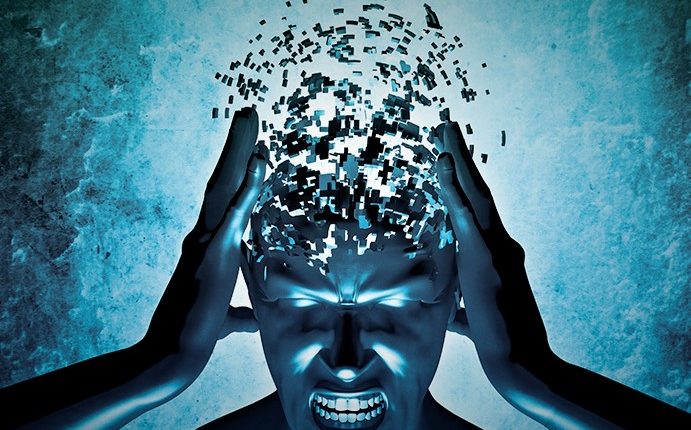
Headaches: migraine or cephalea?
The International Headache Society has classified almost 100 different types of headaches. They can be divided into primary and secondary headaches. Let’s talk about some forms of primary headaches: migraine in the first place, then tension headache and cluster headache
In addition to these forms, which we discuss in more detail below, it is useful to specify that there are also secondary headaches, i.e. headaches derived from the presence of other diseases or particular clinical conditions.
Primary headache: migraine
Migraine is a widespread condition of primary recurrent headache: 12% of the world’s population suffer from it, particularly women, from puberty to menopause.
It is characterised by recurrent attacks, which can last from 4 to 72 hours, pulsating, of significant intensity, associated with nausea, vomiting, disturbance of light and noise, and worsening with physical exertion.
The causes
Migraine is a multifactorial disorder that is more common in those with a family history: what is inherited is a predisposition to hyperexcitability of the brain towards
- changes in internal homeostasis (hormonal changes, changes in sleep-wake rhythms, stress);
- variations in external homeostasis (environmental and climatic variations).
These phenomena generate as a response the appearance of migraine crises.
Migraine as a primary headache: when it can be considered a pathology
When the person suffers from 2 to 3 attacks a month, migraine should be considered a pathology because it creates disability, reducing the quality of life in terms of social, work and family roles.
It can become chronic when the sufferer has at least 15 days of headache for more than 3 months, at least 8 of which are characterised by migraine pain.
It is important to consult the general practitioner and the neurological specialist to address the condition together, identifying a personalised solution to improve quality of life and reduce the disability that results from chronic migraine.
How to treat
Diagnosis is always clinical and therapy must be tailored to the patient. We have several therapies available to help combat migraine that we prescribe based on:
- pain;
- duration;
- frequency of attacks;
- any contraindications to certain medications.
The treatments are divided into
- symptomatic, with drugs to be taken as needed in the event of an attack;
- preventive, to be used when the patient has at least four days of headache per month with a significant impact on quality of life.
Among the drugs for the attack, the most specific are triptans, but also non-steroidal anti-inflammatory drugs.
As prophylaxis, i.e. treatments that are mostly implemented in cycles of at least 3 months, can be used:
- beta blockers;
- calcium channel blockers;
- neuromodulants;
- serotonin reuptake inhibitors.
Monoclonal antibodies and botulinum toxin
Today we also have new prophylactic drugs available:
- monoclonal antibodies directed against a particular molecule called CGRP, one of the specific triggers of migraine;
- botulinum toxin, which is injected under the skin at the most pain-sensitive points on the head and neck.
Both of these solutions, however, are second-line therapies, i.e. they can only be used after other drugs have been tried.
Another type of primary headache: tension cephalea
Tension-type headaches affect women more than men, almost twice as often.
This is another type of primary headache that can occur in youth, tends to persist into adulthood, and is often related to muscle tension.
Tension-type headache manifests itself as an oppressive pain of mild to medium intensity.
Unlike migraine, the pain of tension-type headache is not accompanied by nausea and is not sensitive to light, except for minimal discomfort.
Causes
Causes include:
- familiarity;
- environmental factors, including climate change and weather variations;
- stress and emotional and psychological tension, which play a major role in the onset of tension-type headache.
In the presence of emotional tension, individuals adopt postures that keep the muscles of the cervical spine or shoulders tense for many hours, causing headaches.
The same happens when people get a bad night’s rest, because there is a malfunction in the brain structures that control emotionality, sleep and pain threshold, with a decrease in certain neurotransmitters such as serotonin and melatonin.
How to treat
Treatment of tension-type headaches can range from simple analgesics as needed to muscle relaxants and preventive drugs.
For those who suffer from this type of headache, we also recommend physical activity aimed at relaxation, such as walking in the open air, yoga or Pilates.
A third type: cluster headache
Cluster headache affects more men, but is less common than the previous two forms, tension-type headache and migraine.
It can begin in their early twenties and manifests as a very strong, stabbing pain that is concentrated in one part of the head, around the eye, and lasts from 15 minutes to 3 hours, even several times a day.
It owes its name ‘cluster’ to the pattern of attacks, which occur repeatedly and continuously for several weeks.
Causes and treatment
Of course, the hereditary component plays a major role here, but environmental and lifestyle causes also have a considerable influence.
As far as treatment is concerned, this type of headache reacts very well to triptans administered subcutaneously, but for chronic sufferers we recommend a prophylactic treatment with cortisone and calcium channel blockers.
Read Also:
Sinusitis: How To Recognise That Headache Coming From The Nose
Head Trauma In Children: How The Ordinary Citizen Should Intervene While Waiting For The Rescuers


